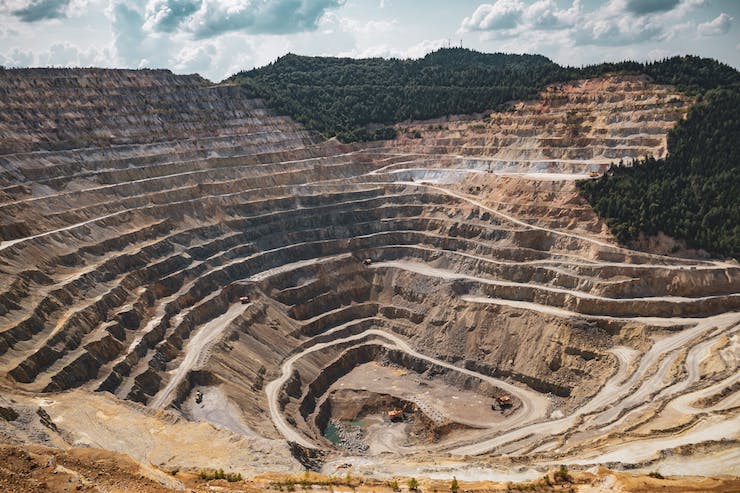India is Using Drones to Monitor the Mining Industry

Mining serves as a backbone to many industries world wide. Without the resources dug up from mines, the raw materials needed to keep the world going wouldn’t exist. Mines for metals, fuels, gems, and gases can be found all over the world. As the 7th largest country, India’s economy greatly depends on it’s many mines. There are around 3,000 operating mines in India, employing close to 700,000 people. The Indian Mining Industry produces a wide range of products. They mine around 84 different minerals, metals, and fuels like aluminum, coal, and gold. With mining being such a large part of India’s economic life, it only makes sense that the country has faced it’s fair share of difficulties with mining.
One of the biggest issues that India has faced with their mines comes from illegal mining. There has yet to be an official investigation on illegal mining practices in India, but authorities are still well aware that the problem exists. Illegal mining often involves the use of child laborers as well as migrant workers. These undocumented workers are often poorly treated and underpaid. The mining of any materials is a high risk occupation, it is no place for a child. After an expose by the Thomson Reuters Foundation revealed a major coverup in the deaths of children at a mica mine in Jharkhand, authorities were forced to take action. Other areas of illegal mining occur when miners do not adhere to set mining practices and over mine an area of land. These practices can cause drastic, irreparable damage to the land. There is also a concern of theft from mines that has been rampart in India’s many mines.
To help get a handle on the situation, India’s mining ministry is turning to drones to better monitor mines. Being able to send investigators out to all of the mines to check for illegal mining issues is far too time consuming and costly. It also allows for the mine managers to have enough time to cover their tracks if they have been employing illegal practices. By sending out drones, the ministry can quickly, and cheaply get a valid view of what is going on in the nation’s mines. The drones can be sent at any time, as many times as needed. The drones can be used to monitor employee conditions, track nighttime activities, guard against theft, and monitor safe environmental practices. The drones can also be used to create up to date maps of mines, giving authorities critical data about the future of each mine’s productivity.
In collaboration with police and researchers from the Center for Aerospace Research at Anna University in Chennai, the drone mine monitoring project began. A representative from Coal India reported, “A pilot project was undertaken at Coal India subsidiary Central Coalfields Topa Mine where drones successfully tracked sources of illegal mining as well as the route followed by them to take away the pilfered coal.” While the program is proving to be of great aid, Rana Sengupta, chief executive of the non-profit Mine Labor Protection Campaign in Rajasthan state made it clear that the drones are not the end all answer to keeping miners safe. “Drones can show you the extent of the problem, but if the intent is to check illegal mining, you need to involve the villages and local communities in the area,” said Sengupta. “We already have the capability to use satellite images to see where illegal mining is taking place. Villagers can be your eyes and ears far more effectively in preventing the activity than drones.”
However, the drone program is continuing to assist authorities monitor the mines. In fact, the drones are being used to even further safety measures around mines through territories occupied by Naxal groups. The Naxal movement consists of militant rebels that have been opposing India’s governments since the mid 1960s. In 2016 a group of Naxals stole explosives from the iron ore mines at Dantewada’s Akashnagar. A Union home ministry official explained, “There are huge amounts of explosives that are transported in such mines. The Naxals primarily look at stealing these explosives, which come in handy for them to make improvised explosive devices (IED). As collateral damage, the mining equipment is damaged or worse still, our men are killed.”
For this reason the Union government has decided to use some of the drones monitoring for illegal mining practices to closely monitor areas near mines known to be in Naxal regions. The drones will have no ability to act out if any terrorist actions take place. They will only be used to monitor and prevent such actions. The drone’s camera will send a live feed back to a station where authorities can step in when needed. The same Union representative said, “This kind of technology will certainly help to avert this disaster.” Whether drones are being used to prevent illegal mining or acts of terror, the fact remains that they go a long way to provide the necessary data in a safe, cost efficient manner to protect everyone involved in India’s mining industry.
|